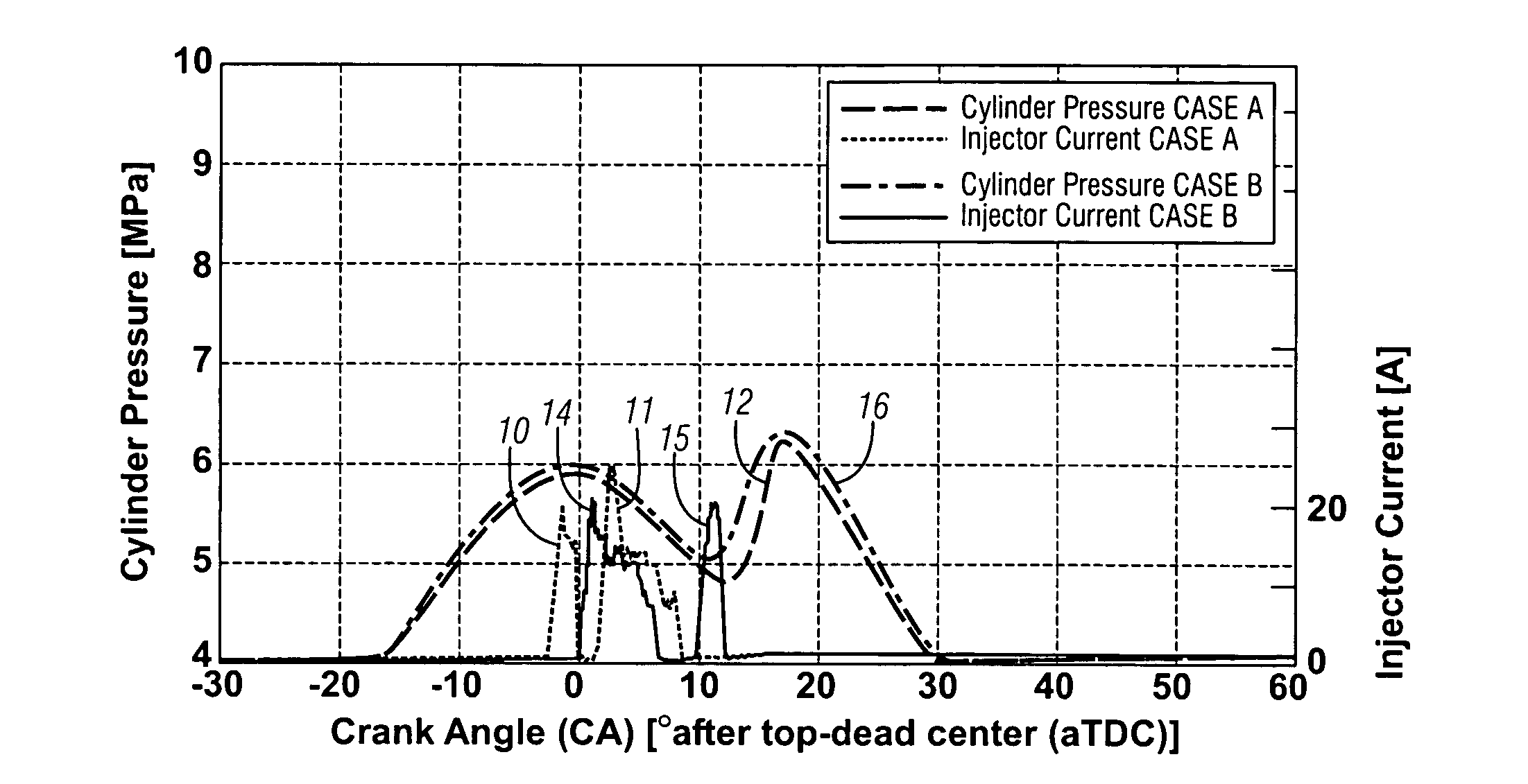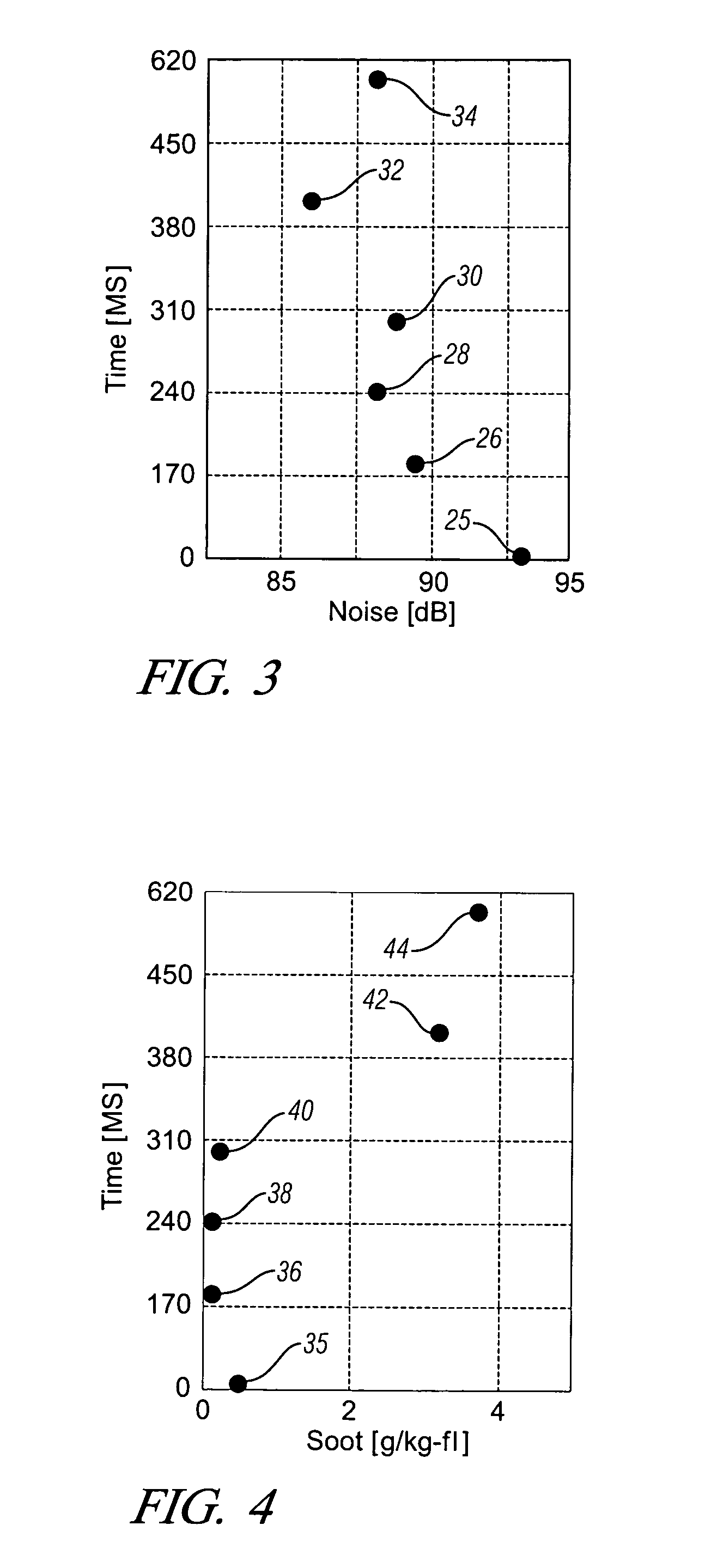Injection strategy for low noise and soot combustion
a low noise and soot combustion technology, applied in the direction of machines/engines, mechanical equipment, electric control, etc., can solve the problems of increasing the formation of soot, excessive engine noise, and undesirable soot particle emissions, and achieve the effect of reducing engine noise and soo
- Summary
- Abstract
- Description
- Claims
- Application Information
AI Technical Summary
Benefits of technology
Problems solved by technology
Method used
Image
Examples
Embodiment Construction
[0015] The present invention, provides a novel strategy or method by injecting fuel in two distinct fuel injection events per engine cycle. The first injection event is main fuel injection, which occurs when the crankshaft is near top-dead center. The main injection event delivers a majority of the fuel needed to provide a majority of the power produced during combustion.
[0016] The second injection event is post injection, which occurs shortly after the main fuel injection event. The post injection event provides a supplemental amount of fuel to the combustion chamber to reduce the rate of pressure rise while increasing, turbulence, mixing and cylinder pressure within the combustion chamber.
[0017] In operation, intake air drawn in and compressed by a piston within each combustion chamber. As the piston nears top dead center, and the crankshaft angle approaches 0 degrees, an ECM actuates the fuel injector to initiate the main fuel injection event which injects between 80 and 95% of...
PUM
 Login to View More
Login to View More Abstract
Description
Claims
Application Information
 Login to View More
Login to View More - R&D
- Intellectual Property
- Life Sciences
- Materials
- Tech Scout
- Unparalleled Data Quality
- Higher Quality Content
- 60% Fewer Hallucinations
Browse by: Latest US Patents, China's latest patents, Technical Efficacy Thesaurus, Application Domain, Technology Topic, Popular Technical Reports.
© 2025 PatSnap. All rights reserved.Legal|Privacy policy|Modern Slavery Act Transparency Statement|Sitemap|About US| Contact US: help@patsnap.com



